Technologies
iOS 16.4: The New Features That Just Hit Your iPhone
The update brings new emoji, voice isolation in phone calls, and more to your iPhone.
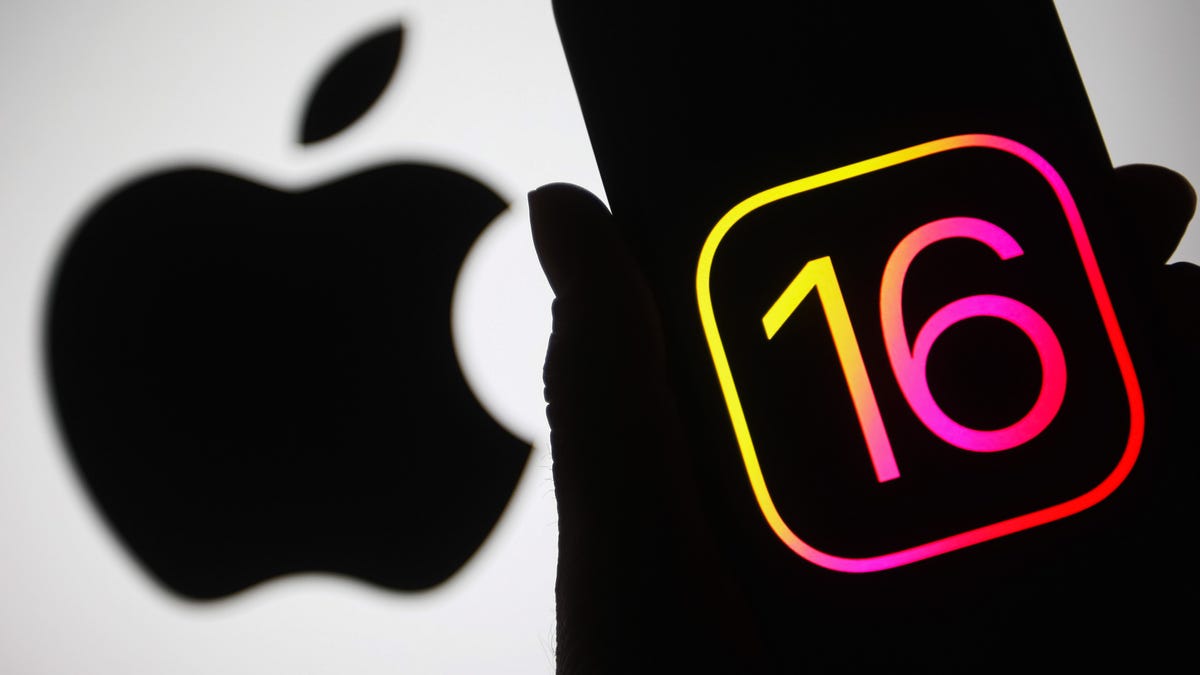
The wait for iOS 16.4 is over. Apple rolled out iOS 16.4 on Monday, about a week after the company let developers and beta testers try the iOS 16.4 release candidate.
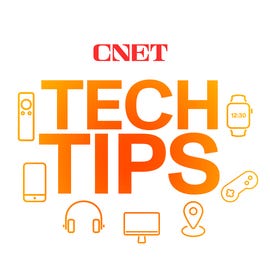

The update comes with a handful of bug and security fixes, as well as some new features. Some of the new features include new emoji, voice isolation for cellular calls, and more.
Here are some of the new features your iPhone gains with iOS 16.4.
31 new emoji
The iOS 16.4 update brings 31 new emoji to your iOS device. The new emoji include a new smiley; new animals, like a moose and a goose; and new heart colors, like pink and light blue.
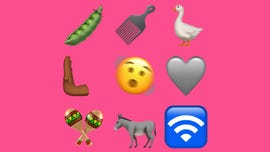

Some of the new emoji released in iOS 16.4.
Patrick Holland/CNETThe new emoji all come from Unicode’s September 2022 recommendation list, Emoji 15.0.
Voice isolation comes to cellular calls
Voice isolation was introduced with iOS 15 in 2021, and at the time it worked only on FaceTime calls. Now with iOS 16.4, you can use the feature on your cellular calls too.
When enabled, voice isolation can help the person you’re on a call with hear you more clearly by muffling background sounds, like kids playing in the other room or construction outside your window. It could therefore cut back on the number of times you have to repeat yourself in a phone call because the other person can’t hear you.
Easily find photo duplicates across shared albums
In iOS 16.4, you can easily find duplicate photos in shared albums in Photos. If you share photos with family or friends via iCloud, iOS 16.4 will show you all the duplicates across albums. You can also Merge these duplicate photos.
Support for PlayStation 5 controller
According to MacRumors, iOS 16.4 adds support for the PlayStation 5 DualSense Edge Wireless Controller. You can use the controller to play controller-enabled games from services like Apple Arcade — a CNET Editors’ Choice award pick — on your iPhone.
Apple Books update
The page-turn curl animation is back in Apple Books with iOS 16.4, after it was removed in a previous iOS update. Before, when you turned a page in an ebook on your iPhone, the page would slide to one side of your screen or it would vanish and be replaced by the next page. You can still choose these other page-turn animations in addition to the curl animation.
Music app changes


A small banner appears at the bottom of the screen when you choose to play a song next in Apple Music in iOS 16.4
Zach McAuliffe/CNETThe Music interface has been slightly modified in iOS 16.4. When you add a song to your queue, a small banner appears near the bottom of your screen instead of a full-screen pop-up like in previous iOS versions.
Also, if you go into your Library in Music, you can organize your Library by Artist and tap into an artist, across the top of your page you will see an icon for that artist. A search bar used to be at the top of this page. Tap the artist’s icon and you will be taken to that artist’s Music page.
Apple Podcasts updates
Apple Podcasts also gets an update with iOS 16.4. Now you can access a Channels tab in your Library, which shows you different networks you follow. Tap into each channel and you see can the shows you subscribe to and other shows that channel produces.
See who and what is covered under AppleCare
With iOS 16.4, you can go to Settings > General > About > Coverage to check who and what devices are covered on your AppleCare plan. That way, if your AirPods break, you can easily check whther they are covered. You can manage your coverage from here too.
Focus Mode filters added
If you have an iPhone 14 Pro or Pro Max, iOS 16.4 lets you enable or disable the always-on display option with certain Focus Modes. When creating a new filter, scroll down to the bottom of the edit page, tap Focus Filter, then tap Always-On Display to enable or disable the display for that Focus Mode.
New Apple Wallet features
You can add three new order-tracking widgets for Apple Wallet to your home screen with iOS 16.4. Each widget displays your tracking information on active orders, but the widgets are different sizes: small, medium and large.
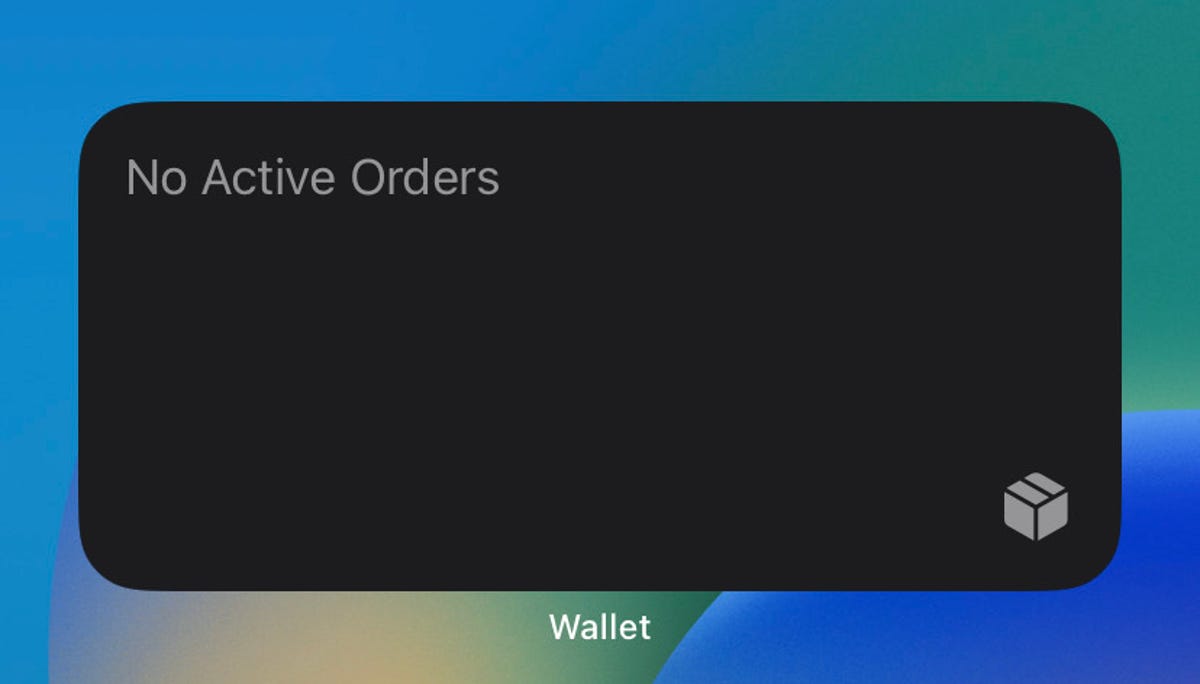

The medium-size Apple Wallet order tracking widget takes up three tile spaces on your iPhone’s screen.
Zach McAuliffe/CNETMore accessibility options
The update also adds new accessibility options. One new option is called Dim Flashing Lights, and it can be found in the Motion menu in Settings. The option’s description says video content that depicts repeated flashing or strobing lights will automatically be dimmed. Video timelines will also show when flashing lights will occur. VoiceOver support has also been expanded to the maps and Weather apps.
Apple ID and beta software updates
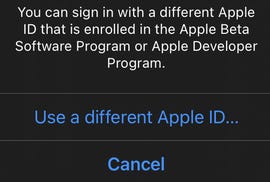

The latest iOS update lets you sign into another Apple ID to access other beta software.
Zach McAuliffe/CNETWith iOS 16.4, developers and beta testers can check whether their Apple ID is associated with the developer beta, public beta or both. If you have a different Apple ID, like one for your job, that has access to beta updates, iOS 16.4 also lets you switch to that account from your device.
New keyboards, Siri voices and language updates
This iOS 16.4 update also adds keyboards for the Choctaw and Chickasaw languages, and there are new Siri voices for Arabic and Hebrew. Language updates have also come to Korean, Ukrainian, Gujarati, Punjabi and Urdu.
Here are Apple’s release notes for iOS 16.4.
This update includes the following enhancements and bug fixes:
• 21 new emoji including animals, hand gestures, and objects are now available in emoji keyboard
• Notifications for web apps added to the Home Screen
• Voice Isolation for cellular calls prioritizes your voice and blocks out ambient noise around you
• Duplicates album in Photos expands support to detect duplicate photos and videos in an iCloud Shared Photo
Library
• VoiceOver support for maps in the Weather app
• Accessibility setting to automatically dim video when flashes of light or strobe effects are detected
• Fixes an issue where Ask to Buy requests from children may fail to appear on the parent’s device
• Addresses issues where Matter-compatible thermostats could become unresponsive when paired to Apple Home
• Crash Detection optimizations on iPhone 14 and iPhone
14 Pro models
For more, check out what was included in iOS 16.3.1 and features you may have missed in iOS 16.3.
Technologies
Tariffs Explained: How Trump’s Ever-Changing Trade Policy Will Affect You
While Donald Trump’s wide-ranging taxes on imports face scrutiny in court, he also continues to alter them and introduce or propose others. Here’s what it will mean for you.
President Donald Trump’s second-term economic plan can be summed up in one word: tariffs. When his barrage of import taxes went into overdrive a month ago, markets trembled and business leaders sounded alarms about the economic damage they would cause. After weeks of uncertainty and clashes with major companies, Trump’s tariffs hit their biggest roadblock yet in court before being reinstated ahead of a final ruling, allowing him to double the rate on imported steel and aluminum this week.
Late Wednesday, the US Court of International Trade ruled that Trump had overstepped his authority when he imposed tariffs, effectively nullifying the tariffs, after concluding that Congress has the sole authority to issue tariffs and decide other foreign trade matters, and that the International Emergency Economic Powers Act of 1977 — which Trump has used to justify his ability to impose them — doesn’t grant the president «unlimited» authority on tariffs. The next day, an appeals court allowed the tariffs to go back into effect for the time being, while the administration calls for the Supreme Court to overturn the trade court ruling altogether.
However things shake out in the end, the initial ruling certainly came as a relief to many, given the chaos and uncertainty that Trump’s tariffs how caused thus far. For his part, Trump has recently lashed out against companies — like Apple and Walmart — that have reacted to the tariffs or discussed their impacts in ways he dislikes. Apple has been working to move manufacturing for the US market from China to relatively less-tariffed India, to which Trump has threatened them with a 25% penalty rate if they don’t bring manufacturing to the US instead. Experts have predicted that a US-made iPhone, for example, would cost consumers about $3,500. During a recent earnings call, Walmart warned that prices would rise on things like toys, tech and food at some point in the summer, which prompted Trump to demand the chain eat the costs themselves, another unlikely scenario.
Amid all this noise, you might still be wondering: What exactly are tariffs and what will they mean for me?
The short answer: Expect to pay more for at least some goods and services. For the long answer, keep reading, and for more, check out CNET’s price tracker for 11 popular and tariff-vulnerable products.
What are tariffs?
Put simply, a tariff is a tax on the cost of importing or exporting goods by a particular country. So, for example, a «60% tariff» on Chinese imports would be a 60% tax on the price of importing, say, computer components from China.
Trump has been fixated on imports as the centerpiece of his economic plans, often claiming that the money collected from taxes on imported goods would help finance other parts of his agenda. The US imports $3 trillion of goods from other countries annually.
The president has also, more recently, shown a particular fixation on trade deficits, claiming that the US having a trade deficit with any country means that country is ripping the US off. This is a flawed understanding of the matter, as a lot of economists have said, deficits are often a simple case of resource realities: Wealthy nations like the US buy specific things from nations that have them, while those nations might in turn not be wealthy enough to buy much of anything from the US.
While Trump deployed tariffs in his first term, notably against China, he ramped up his plans more significantly for the 2024 campaign, promising 60% tariffs against China and a universal 20% tariff on all imports into the US. Now, tariffs against China are more than double that amount and a universal tariff on all exports is a reality.
«Tariffs are the greatest thing ever invented,» Trump said at a campaign stop in Michigan last year. At one point, he called himself «Tariff Man» in a post on Truth Social.
Who pays the cost of tariffs?
Trump repeatedly claimed, before and immediately after returning to the White House, that the country of origin for an imported good pays the cost of the tariffs and that Americans would not see any price increases from them. However, as economists and fact-checkers stressed, this is not the case.
The companies importing the tariffed goods — American companies or organizations in this case — pay the higher costs. To compensate, companies can raise their prices or absorb the additional costs themselves.
So, who ends up paying the price for tariffs? In the end, usually you, the consumer. For instance, a universal tariff on goods from Canada would increase Canadian lumber prices, which would have the knock-on effect of making construction and home renovations more expensive for US consumers. While it is possible for a company to absorb the costs of tariffs without increasing prices, this is not at all likely, at least for now.
Speaking with CNET, Ryan Reith, vice president of International Data’s worldwide mobile device tracking programs, explained that price hikes from tariffs, especially on technology and hardware, are inevitable in the short term. He estimated that the full amount imposed on imports by Trump’s tariffs would be passed on to consumers, which he called the «cost pass-through.» Any potential efforts for companies to absorb the new costs themselves would come in the future, once they have a better understanding of the tariffs, if at all.
Which Trump tariffs have gone into effect?
Following Trump’s «Liberation Day» announcements on April 2, the following tariffs are in effect:
- A 50% tariff on all steel and aluminum imports, doubled from 25% as of June 4.
- A 30% tariff on all Chinese imports until Aug. 10 while negotiations continue. China being a major focus of Trump’s trade agenda, this rate has been notably higher than others and has steadily increased as Beijing returned fire with tariffs of its own, peaking at 145%, which it could return to down the line if a deal is not reached.
- 25% tariffs on imports from Canada and Mexico not covered under the 2018 USMCA trade agreement brokered during Trump’s first term. The deal covers roughly half of all imports from Canada and about a third of those from Mexico, so the rest are subject to the new tariffs. Energy imports not covered by USMCA only will be taxed at 10%.
- A 25% tariff on all foreign-made cars and auto parts.
- A sweeping overall 10% tariff on all imported goods.
For certain countries that Trump said were more responsible for the US trade deficit, Trump imposed what he called «reciprocal» tariffs that exceed the 10% level: 20% for the 27 nations that make up the European Union, 26% for India, 24% for Japan and so on. These were meant to take effect on April 9 but were delayed by 90 days as a result of historic stock market volatility, which makes the new effective date July 8.
— Rapid Response 47 (@RapidResponse47) April 2, 2025
Trump’s claim that these reciprocal tariffs are based on high tariffs imposed against the US by the targeted countries has drawn intense pushback from experts and economists, who have argued that some of these numbers are false or potentially inflated. For example, the above chart claims a 39% tariff from the EU, despite its average tariff for US goods being around 3%. Some of the tariffs are against places that are not countries but tiny territories of other nations. The Heard and McDonald Islands, for example, are uninhabited. We’ll dig into the confusion around these calculations below.
Notably, that minimum 10% tariff will not be on top of those steel, aluminum and auto tariffs. Canada and Mexico were also spared from the 10% minimum additional tariff imposed on all countries the US trades with.
On April 11, the administration said smartphones, laptops and other consumer electronics, along with flat panel displays, memory chips and semiconductors, were exempt from reciprocal tariffs. But it wasn’t clear whether that would remain the case or whether such products might face different fees later.
How were the Trump reciprocal tariffs calculated?
The numbers released by the Trump administration for its barrage of «reciprocal» tariffs led to widespread confusion among experts. Trump’s own claim that these new rates were derived by halving the tariffs already imposed against the US by certain countries was widely disputed, with critics noting that some of the numbers listed for certain countries were much higher than the actual rates and some countries had tariff rates listed despite not specifically having tariffs against the US at all.
In a post to X that spread fast across social media, finance journalist James Surowiecki said that the new reciprocal rates appeared to have been reached by taking the trade deficit the US has with each country and dividing it by the amount the country exports to the US. This, he explained, consistently produced the reciprocal tariff percentages revealed by the White House across the board.
Just figured out where these fake tariff rates come from. They didn’t actually calculate tariff rates + non-tariff barriers, as they say they did. Instead, for every country, they just took our trade deficit with that country and divided it by the country’s exports to us.
So we… https://t.co/PBjF8xmcuv— James Surowiecki (@JamesSurowiecki) April 2, 2025
«What extraordinary nonsense this is,» Surowiecki wrote about the finding.
The White House later attempted to debunk this idea, releasing what it claimed was the real formula, though it was quickly determined that this formula was arguably just a more complex version of the one Surowiecki deduced.
What will the Trump tariffs do to prices?
In short: Prices are almost certainly going up, if not now, then eventually. That is, if the products even make it to US shelves at all, as some tariffs will simply be too high for companies to bother dealing with.
While the effects of a lot of tariffs might not be felt straight away, some potential real-world examples have already emerged. Microsoft has increased prices across the board for its Xbox gaming brand, with its flagship Xbox Series X console jumping 20% from $500 to $600. Elsewhere, Kent International, one of the main suppliers of bicycles to Walmart, announced that it would be stopping imports from China, which account for 90% of its stock.
Speaking about Trump’s tariff plans just before they were announced, White House trade adviser Peter Navarro said that they would generate $6 trillion in revenue over the next decade. Given that tariffs are most often paid by consumers, CNN characterized this as potentially «the largest tax hike in US history.» New estimates from the Yale Budget Lab, cited by Axios, predict that Trump’s new tariffs will cause a 2.3% increase in inflation throughout 2025. This translates to about a $3,800 increase in expenses for the average American household.
Reith, the IDC analyst, told CNET that Chinese-based tech companies, like PC makers Acer, Asus and Lenovo, have «100% exposure» to these import taxes as they currently stand, with products like phones and computers the most likely to take a hit. He also said that the companies best positioned to weather the tariff impacts are those that have moved some of their operations out of China to places like India, Thailand and Vietnam, singling out the likes of Apple, Dell and HP. Samsung, based in South Korea, is also likely to avoid the full force of Trump’s tariffs.
In an effort to minimize its tariff vulnerability, Apple has begun to move the production of goods for the US market from China to India.
Will tariffs impact prices immediately?
In the short term — the first days or weeks after a tariff takes effect — maybe not. There are still a lot of products in the US imported pre-tariffs and on store shelves, meaning the businesses don’t need a price hike to recoup import taxes. Once new products need to be brought in from overseas, that’s when you’ll see prices start to climb because of tariffs or you’ll see them become unavailable.
That uncertainty has made consumers anxious. CNET’s survey revealed that about 38% of shoppers feel pressured to make certain purchases before tariffs make them more expensive. About 10% say they have already made certain purchases in hopes of getting them in before the price hikes, while 27% said they have delayed purchases for products that cost more than $500. Generally, this worry is the most acute concerning smartphones, laptops and home appliances.
Mark Cuban, the billionaire businessman and Trump critic, voiced concerns about when to buy certain things in a post on Bluesky just after Trump’s «Liberation Day» announcements. In it, he suggested that consumers might want to stock up on certain items before tariff inflation hits.
«It’s not a bad idea to go to the local Walmart or big box retailer and buy lots of consumables now,» Cuban wrote. «From toothpaste to soap, anything you can find storage space for, buy before they have to replenish inventory. Even if it’s made in the USA, they will jack up the price and blame it on tariffs.»
CNET’s Money team recommends that before you make any purchase, especially of a high-ticket item, be sure that the expenditure fits within your budget and your spending plans in the first place. Buying something you can’t afford now because it might be less affordable later can be burdensome, to say the least.
What is the goal of the White House tariff plan?
The typical goal behind tariffs is to discourage consumers and businesses from buying the tariffed, foreign-sourced goods and encourage them to buy domestically produced goods instead. When implemented in the right way, tariffs are generally seen as a useful way to protect domestic industries.
One of the stated intentions for Trump’s tariffs is along those lines: to restore American manufacturing and production. However, the White House also claims to be having negotiations with numerous countries looking for tariffs exemptions and some officials have also floated the idea that the tariffs will help finance Trump’s tax cuts.
You don’t have to think about those goals for too long before you realize that they’re contradictory: If manufacturing moves to the US or if a bunch of countries are exempt from tariffs then tariffs aren’t actually being collected and can’t be used to finance anything. This and many other points have led a lot of economists to allege that Trump’s plans are misguided.
In terms of returning — or «reshoring» — manufacturing in the US, tariffs are a better tool for protecting industries that already exist because importers can fall back on them right away. Building up the factories and plants needed for this in the US could take years, leaving Americans to suffer under higher prices in the interim.
That problem is worsened by the fact that the materials needed to build those factories will also be tariffed, making the costs of «reshoring» production in the US too heavy for companies to stomach. These issues, and the general instability of American economic policies under Trump, are part of why experts warn that Trump’s tariffs could have the opposite effect: keeping manufacturing out of the US and leaving consumers stuck with inflated prices. Any factories that do get built in the US because of tariffs also have a high chance of being automated, canceling out a lot of job creation potential. To give you one real-world example of this: When warning customers of future price hikes, toy maker Mattel also noted that it had no plans to move manufacturing to the US.
Trump has reportedly been fixated on the notion that Apple’s iPhone — the most popular smartphone in the US market — can be manufactured entirely in the US. This has been broadly dismissed by experts, for a lot of the same reasons mentioned above, but also because an American-made iPhone could cost upward of $3,500. One report from 404 Media dubbed the idea «a pure fantasy.» The overall sophistication and breadth of China’s manufacturing sector has also been cited, with CEO Tim Cook stating in 2017 that the US lacks the number of tooling engineers to make its products.
For more, see how tariffs might raise the prices of Apple products and find some expert tips for saving money.
Technologies
Today’s NYT Mini Crossword Answers for Sunday, June 8
Here are the answers for The New York Times Mini Crossword for June 8.
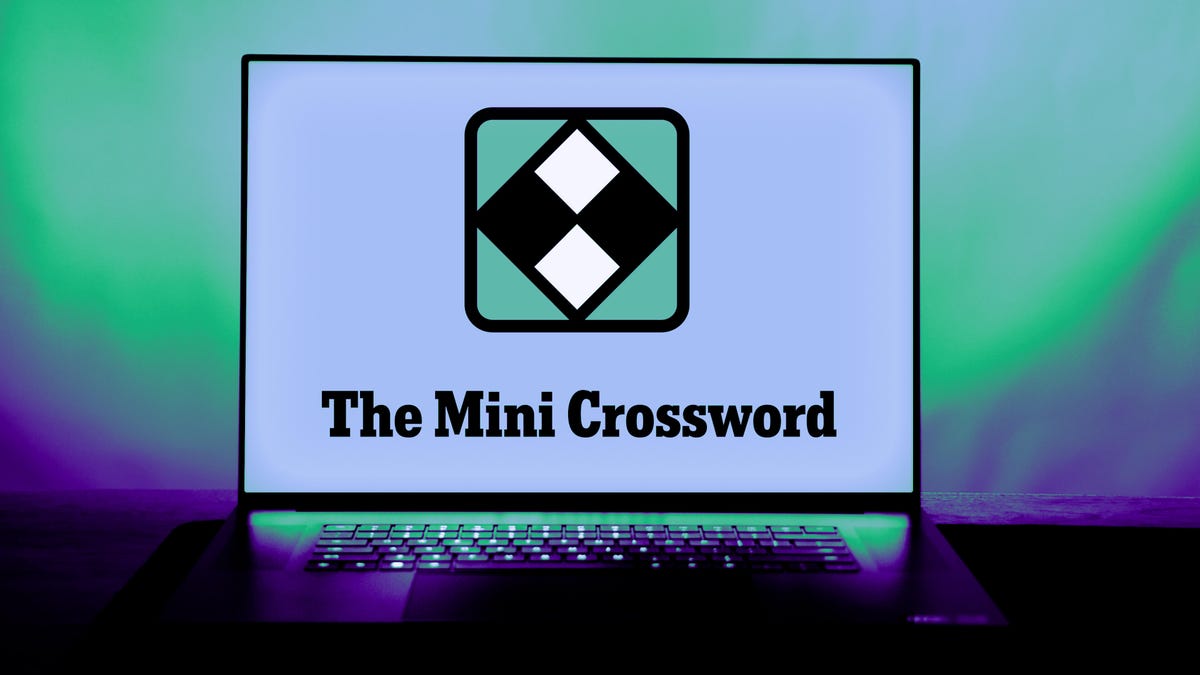
Looking for the most recent Mini Crossword answer? Click here for today’s Mini Crossword hints, as well as our daily answers and hints for The New York Times Wordle, Strands, Connections and Connections: Sports Edition puzzles.
Today’s NYT Mini Crossword isn’t too tough, but 1-Across might make you think of the sky, and that’s not the direction you need to go. Need some help with today’s Mini Crossword? Read on. And if you could use some hints and guidance for daily solving, check out our Mini Crossword tips.
The Mini Crossword is just one of many games in the Times’ games collection. If you’re looking for today’s Wordle, Connections, Connections: Sports Edition and Strands answers, you can visit CNET’s NYT puzzle hints page.
Read more: Tips and Tricks for Solving The New York Times Mini Crossword
Let’s get to those Mini Crossword clues and answers.
Mini across clues and answers
1A clue: Org. with shooting stars
Answer: NBA
4A clue: Buildings with weather vanes, stereotypically
Answer: BARNS
6A clue: Swiss watch brand
Answer: OMEGA
7A clue: What Santa, Gandalf and Dumbledore each have
Answer: BEARD
8A clue: Pie in the ___
Answer: SKY
Mini down clues and answers
1D clue: «I’m bad with ___» (party excuse)
Answer: NAMES
2D clue: Start of a billiards game
Answer: BREAK
3D clue: Seeing red
Answer: ANGRY
4D clue: Timothée’s role in «A Complete Unknown»
Answer: BOB
5D clue: Feeling blue
Answer: SAD
How to play more Mini Crosswords
The New York Times Games section offers a large number of online games, but only some of them are free for all to play. You can play the current day’s Mini Crossword for free, but you’ll need a subscription to the Times Games section to play older puzzles from the archives.
Technologies
Today’s NYT Connections: Sports Edition Hints and Answers for June 8, #258
Here are hints and the answers for the NYT Connections: Sports Edition puzzle, No. 258, for June 8.

Looking for the most recent regular Connections answers? Click here for today’s Connections hints, as well as our daily answers and hints for The New York Times Mini Crossword, Wordle and Strands puzzles.
Today’s Connections: Sports Edition isn’t too tough, but let’s hope you know the résumé of a certain NBA player to get the blue group. Read on for hints and the answers.
Connections: Sports Edition is out of beta now, making its debut on Super Bowl Sunday, Feb. 9. That’s a sign that the game has earned enough loyal players that The Athletic, the subscription-based sports journalism site owned by the Times, will continue to publish it. It doesn’t show up in the NYT Games app but now appears in The Athletic’s own app. Or you can continue to play it free online.
Read more: NYT Connections: Sports Edition Puzzle Comes Out of Beta
Hints for today’s Connections: Sports Edition groups
Here are four hints for the groupings in today’s Connections: Sports Edition puzzle, ranked from the easiest yellow group to the tough (and sometimes bizarre) purple group.
Yellow group hint: Let’s go at it.
Green group hint: Signal-callers.
Blue group hint: Hoops star’s teams.
Purple group hint: Great barbecue town.
Answers for today’s Connections: Sports Edition groups
Yellow group: Competition.
Green group: Names of NFL QBs.
Blue group: Teams Tyrese Haliburton has played for.
Purple group: Kansas City ____.
Read more: Wordle Cheat Sheet: Here Are the Most Popular Letters Used in English Words
What are today’s Connections: Sports Edition answers?
The yellow words in today’s Connections
The theme is competition. The four answers are bout, contest, event and match.
The green words in today’s Connections
The theme is names of NFL QBs. The four answers are Baker, Bo, Dak and Tua.
The blue words in today’s Connections
The theme is teams Tyrese Haliburton has played for. The four answers are Iowa State, Kings, Pacers and USA.
The purple words in today’s Connections
The theme is Kansas City ____. The four answers are Chiefs, Current, Monarchs and Royals.
-

 Technologies2 года ago
Technologies2 года agoTech Companies Need to Be Held Accountable for Security, Experts Say
-

 Technologies2 года ago
Technologies2 года agoBest Handheld Game Console in 2023
-

 Technologies2 года ago
Technologies2 года agoTighten Up Your VR Game With the Best Head Straps for Quest 2
-

 Technologies4 года ago
Technologies4 года agoVerum, Wickr and Threema: next generation secured messengers
-

 Technologies4 года ago
Technologies4 года agoGoogle to require vaccinations as Silicon Valley rethinks return-to-office policies
-

 Technologies4 года ago
Technologies4 года agoBlack Friday 2021: The best deals on TVs, headphones, kitchenware, and more
-

 Technologies4 года ago
Technologies4 года agoOlivia Harlan Dekker for Verum Messenger
-

 Technologies4 года ago
Technologies4 года agoiPhone 13 event: How to watch Apple’s big announcement tomorrow

